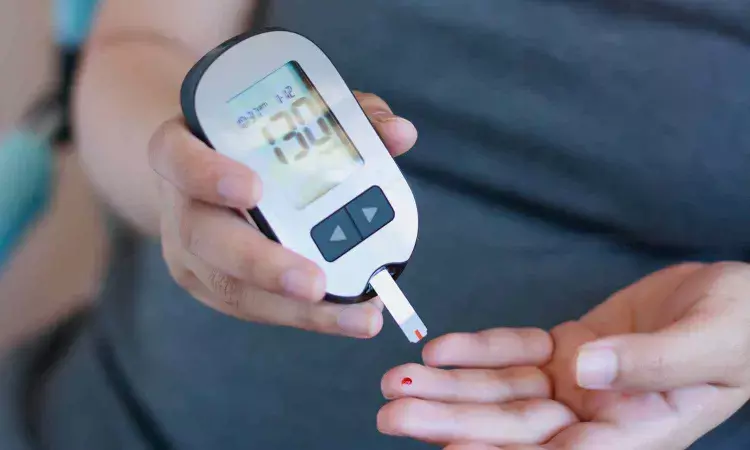- Home
- Medical news & Guidelines
- Anesthesiology
- Cardiology and CTVS
- Critical Care
- Dentistry
- Dermatology
- Diabetes and Endocrinology
- ENT
- Gastroenterology
- Medicine
- Nephrology
- Neurology
- Obstretics-Gynaecology
- Oncology
- Ophthalmology
- Orthopaedics
- Pediatrics-Neonatology
- Psychiatry
- Pulmonology
- Radiology
- Surgery
- Urology
- Laboratory Medicine
- Diet
- Nursing
- Paramedical
- Physiotherapy
- Health news
- Fact Check
- Bone Health Fact Check
- Brain Health Fact Check
- Cancer Related Fact Check
- Child Care Fact Check
- Dental and oral health fact check
- Diabetes and metabolic health fact check
- Diet and Nutrition Fact Check
- Eye and ENT Care Fact Check
- Fitness fact check
- Gut health fact check
- Heart health fact check
- Kidney health fact check
- Medical education fact check
- Men's health fact check
- Respiratory fact check
- Skin and hair care fact check
- Vaccine and Immunization fact check
- Women's health fact check
- AYUSH
- State News
- Andaman and Nicobar Islands
- Andhra Pradesh
- Arunachal Pradesh
- Assam
- Bihar
- Chandigarh
- Chattisgarh
- Dadra and Nagar Haveli
- Daman and Diu
- Delhi
- Goa
- Gujarat
- Haryana
- Himachal Pradesh
- Jammu & Kashmir
- Jharkhand
- Karnataka
- Kerala
- Ladakh
- Lakshadweep
- Madhya Pradesh
- Maharashtra
- Manipur
- Meghalaya
- Mizoram
- Nagaland
- Odisha
- Puducherry
- Punjab
- Rajasthan
- Sikkim
- Tamil Nadu
- Telangana
- Tripura
- Uttar Pradesh
- Uttrakhand
- West Bengal
- Medical Education
- Industry
Red Blood Cells Linked to Vascular Damage in Type 2 Diabetes: Study

Sweden: A study published in the Journal of Clinical Investigation has revealed that red blood cells (RBCs) in individuals with type 2 diabetes release extracellular vesicles (EVs) loaded with the enzyme arginase-1. These vesicles contribute to oxidative stress and damage to the vascular lining, opening potential pathways for therapeutic intervention to prevent complications commonly associated with diabetes.
Led by Aida Collado Sanchez and her team at the Karolinska Institutet in Stockholm, the research explores how RBCs in type 2 diabetes mellitus (T2DM) contribute to endothelial dysfunction—an early marker for various vascular complications, including heart attacks, strokes, and kidney disease. Despite producing fewer EVs than those from healthy individuals, diabetic RBCs showed increased vesicle uptake by endothelial cells. This uptake impaired the ability of blood vessels to relax, a key feature of healthy vascular function.
The researchers demonstrated that this dysfunction could be significantly reduced by blocking arginase activity or mitigating oxidative stress. Their findings suggest that RBC-derived EVs transfer arginase-1 into the endothelial cells, triggering oxidative mechanisms that disrupt the nitric oxide pathway, which is essential for vascular dilation.
The study challenges the long-held belief that endothelial dysfunction in diabetes is primarily due to intrinsic defects within the endothelial cells. Instead, it positions RBC-derived vesicles as external instigators of vascular injury. A better understanding of the mechanisms involved in EV uptake, particularly changes to proteoglycans like syndecan-4 and CD44 on the EV surface, could help in developing targeted interventions.
Further supporting the findings, proteomic analysis of diabetic RBC-EVs revealed elevated levels of proteins linked to oxidative stress. Treatment with an arginase-1 inhibitor, ABH, prevented the spike in reactive oxygen species and preserved normal vessel relaxation in mouse models, even after exposure to diabetic RBC-EVs.
Genetic studies in mice confirmed that this damaging process stems from externally delivered arginase-1 rather than the endothelial cells’ enzyme. Even when the internal production of arginase-1 was silenced, the vesicle-transferred enzyme was sufficient to provoke oxidative stress.
Beyond vascular damage, the study touches upon broader implications of RBC-EVs in diabetes-related complications. These vesicles carry pro-thrombotic markers like tissue factor and phosphatidylserine, which may contribute to increased clotting risk in heart attack patients. Additionally, EVs containing the protein α-synuclein, which plays a role in neurodegenerative diseases, could pass into the brain and trigger inflammation, possibly explaining the higher risk of dementia in diabetics.
“This study suggests that the problem may not lie within the blood vessels themselves, but rather in the blood,” the authors noted. Their work clarifies the cellular mechanisms behind diabetes-induced vascular damage and paves the way for novel therapies aimed at blocking EV uptake or neutralizing their harmful cargo.
Reference:
Erythrocyte-derived extracellular vesicles induce endothelial dysfunction through arginase-1 and oxidative stress in type 2 diabetes. Aida Collado, … , Zhichao Zhou, John Pernow. Published March 20, 2025. Citation Information: J Clin Invest. 2025;135(10):e180900. https://doi.org/10.1172/JCI180900.
Dr Kamal Kant Kohli-MBBS, DTCD- a chest specialist with more than 30 years of practice and a flair for writing clinical articles, Dr Kamal Kant Kohli joined Medical Dialogues as a Chief Editor of Medical News. Besides writing articles, as an editor, he proofreads and verifies all the medical content published on Medical Dialogues including those coming from journals, studies,medical conferences,guidelines etc. Email: drkohli@medicaldialogues.in. Contact no. 011-43720751


